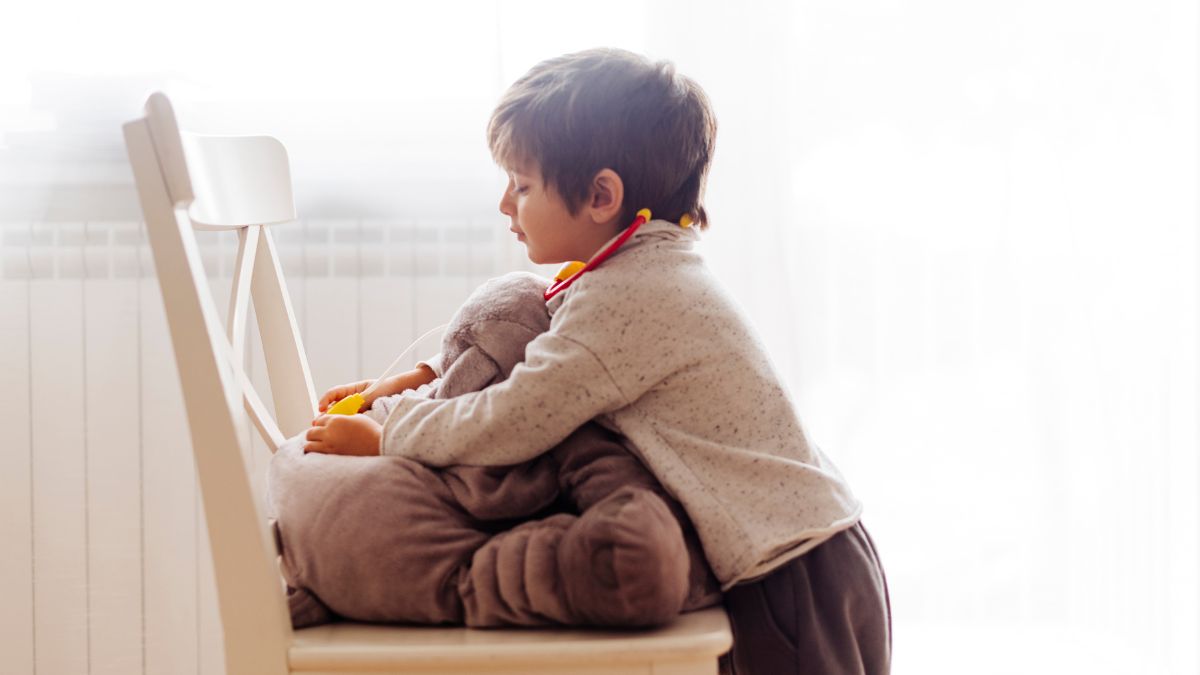Discovering the Perfect Clothes for Children with Autism

Understanding Clothing Sensitivities
For children with autism, clothing sensitivities can pose unique challenges. It is crucial for parents and caregivers to understand these sensitivities and preferences in order to choose appropriate clothing that promotes comfort and reduces sensory discomfort.

Sensory Challenges in Children with Autism
Children with autism often experience sensory processing challenges, including hypersensitivity to clothing. This hypersensitivity can lead to discomfort, meltdowns, sensory overload, and difficulties in daily activities. Sensory issues can vary from child to child, but common sensitivities include:
- Seams: Some children with autism may have a heightened sensitivity to seams in clothing, finding them irritating or uncomfortable.
- Tags: The presence of tags on clothing can cause discomfort or distress for some children with autism.
- Fabrics: Certain fabrics may be more bothersome to children with autism, leading to aversions or discomfort.
- Tightness: Some children may have a heightened sensitivity to tight or restrictive clothing, which can cause discomfort or anxiety.
Understanding and accommodating these sensitivities is essential for ensuring that children with autism feel comfortable and at ease in their clothing. By selecting clothing that addresses these sensitivities, parents and caregivers can help minimize sensory challenges and promote a positive dressing experience for their children.
Common Clothing Sensitivities
Children with autism may exhibit specific preferences or sensitivities when it comes to clothing. It is important to recognize and accommodate these sensitivities to ensure their comfort and well-being. Some common sensitivities include:
- Tags: Many children with autism have an aversion to clothing tags. The presence of tags can cause discomfort or irritation, leading to distress or agitation.
- Seams: The seams in clothing can be bothersome to children with autism, causing discomfort or sensory overload.
- Fabrics: Some children may have sensitivities to certain fabrics, finding them scratchy, itchy, or uncomfortable.
- Tightness: Children with autism may have a preference for looser or less restrictive clothing due to sensory sensitivities.
By taking these sensitivities into account, parents and caregivers can select clothing that minimizes potential sources of discomfort and helps children with autism feel more at ease. This can contribute to a positive dressing experience and support their overall well-being.
Understanding clothing sensitivities is the first step in finding the perfect clothes for children with autism. By considering these challenges and preferences, parents and caregivers can make informed choices when selecting clothing, promoting comfort and reducing sensory discomfort for their children.
Factors to Consider in Clothing Selection
When choosing clothes for children with autism, several factors should be taken into consideration to ensure their comfort and accommodate their sensory sensitivities. These factors include the choice of fabrics and textures, the design of the garments, and the availability of adaptive clothing options.
Comfortable Fabrics and Textures
Children with autism may have hypersensitivity to certain fabrics and textures, which can lead to discomfort, meltdowns, and difficulties in daily activities. Therefore, it's important to select clothes made from soft and breathable fabrics that feel gentle against the skin.
Fabrics like cotton, bamboo, and modal are known for their softness and breathability. These materials allow for better air circulation and can help prevent overheating and excessive sweating. Additionally, they are less likely to cause irritation and itching, making them more comfortable for children with sensory sensitivities.
Tagless and Seamless Designs
Tags and seams can be a major source of discomfort for children with autism, as they can cause irritation and sensory overload. Opting for tagless clothing or removing tags from garments can help alleviate this issue. Tagless designs eliminate the potential irritants and provide a smoother, more comfortable experience.
Seams can also be problematic, especially if they are bulky or have rough edges. Look for clothing with seamless construction or flatlock seams, which lie flat against the skin and minimize friction. Seamless designs help reduce the chances of irritation and discomfort, allowing children to focus on other activities without distraction.
Adaptive Clothing Options
Adaptive clothing options are specifically designed to address the unique needs of children with disabilities, including those with autism. These garments often feature functional and innovative design elements that make dressing easier and more comfortable.
For children with autism, adaptive clothing can include features such as adjustable waistbands, alternative closures (e.g., Velcro, magnetic closures), and wider neck openings. These adaptations provide greater flexibility and ease when putting on or taking off clothes, promoting independence and making the dressing process more manageable.
By considering these factors in clothing selection, caregivers and parents can ensure that children with autism have clothing that is both comfortable and accommodating to their sensory sensitivities. Prioritizing soft fabrics, tagless and seamless designs, and exploring adaptive clothing options can help create a positive and comfortable experience for children with autism.
Tips for Choosing Clothes for Children with Autism
When selecting clothes for children with autism, it's important to consider their unique sensory sensitivities and preferences. By choosing clothing that prioritizes comfort and accommodates their specific needs, you can help create a more positive and comfortable dressing experience. Here are some helpful tips to keep in mind:
Starting with Less Challenging Clothing
To help children with autism develop independent dressing skills, it is beneficial to start with clothing that is less challenging. Begin with items such as socks, t-shirts, or shorts with an elastic waistband, as these are easier to manage when learning to dress themselves. Starting with simpler garments allows children to build confidence and gradually progress to more complex clothing items.
Involving the Child in Clothing Selection
Involving the child in the clothing selection process can empower them and help ensure their comfort. Allow them to express their preferences, such as color or fabric choices, within reasonable limits. By giving them a sense of control and ownership over their clothing, they are more likely to feel comfortable and confident in what they wear.
Considering Sensory Preferences and Sensitivities
Children with autism may have specific sensory preferences and sensitivities when it comes to clothing. Some may be hypersensitive to certain textures, tags, or seams. It's crucial to understand and accommodate these preferences to ensure their comfort and well-being. Opt for clothing that is tagless, seamless, and made from soft, breathable fabrics. These materials can help reduce sensory sensitivity and provide a more comfortable wearing experience.
Adaptive clothing options are also worth considering. These garments often feature adjustable waistbands, alternative closures (such as Velcro or magnetic closures), and wider neck openings to provide greater comfort and ease for children with autism. Adaptive clothing promotes independence and makes the dressing process more manageable [1].
By following these tips, you can choose clothes that cater to the unique needs of children with autism. Prioritizing comfort, involving the child in the selection process, and considering their sensory preferences and sensitivities can contribute to a more positive and enjoyable dressing experience.
Autism-Friendly Clothing Options
When it comes to clothing options for children with autism, there are brands and products available that cater specifically to their needs. These autism-friendly clothing options focus on providing comfort, functionality, and sensory-conscious designs to ensure a positive clothing experience for children on the autism spectrum.
Brands Offering Adaptive Clothing
Several brands have recognized the need for adaptive clothing and have developed lines specifically designed for children with disabilities, including autism. Some well-known brands in this space include Tommy Hilfiger and Target's Cat & Jack. These brands offer a range of adaptive clothing options that provide both style and functionality. Adaptive clothing features elements such as easy closures, adjustable waistbands, and discreet access points, making dressing easier for children with autism [3].
Sensory-Friendly Features in Clothing
Sensory-friendly clothing is designed with the specific sensitivities of children with autism in mind. These clothing items aim to minimize sensory challenges by using soft, comfortable fabrics and incorporating features that reduce discomfort. Brands like Kozie Clothes and Fun and Function offer sensory-conscious merchandise including shirts with compression functionality, weighted shirts, vests, and other items designed to appeal to children with sensory issues [4]. The use of these sensory-friendly features helps children with autism feel more at ease and comfortable in their clothing, reducing the likelihood of sensory overload.
Footwear Options for Children with Autism
Footwear can also pose challenges for children with autism due to sensory sensitivities. Ordinary socks and shoes can be uncomfortable or restrictive, causing discomfort and distress. Smart Knit Kids is a brand that offers high-quality socks specifically designed to contour to the shape of the wearer's foot. These socks are suitable for children with sensory issues who find ordinary socks uncomfortable. The seamless design and stretchy material provide a snug and comfortable fit, ensuring a more pleasant experience when it comes to footwear.
By seeking out brands and products that offer adaptive and sensory-friendly clothing options, parents and caregivers can provide their children with autism with clothes that are comfortable, functional, and suited to their unique needs. These autism-friendly clothing options aim to enhance the overall clothing experience, promote independence, and contribute to the well-being and self-esteem of children on the autism spectrum.
Strategies for Dressing Children with Autism
Dressing children with autism can sometimes be challenging due to their sensory sensitivities and preferences. However, there are strategies that can help make the dressing process more comfortable and successful. Here are three effective strategies to consider:
Creating Visual Schedules and Checklists
Visual schedules and checklists can provide children with autism a clear and structured understanding of the dressing routine. By using visual cues, such as pictures or symbols, you can break down the steps involved in getting dressed and display them in a sequential order. This visual support helps the child anticipate and prepare for each step, reducing anxiety and facilitating a smoother dressing experience.
Checklists can also be beneficial in providing a visual reminder of the clothing items to be worn. The child can check off each item as they put it on, providing a sense of accomplishment and progress. This visual organization promotes independence and helps the child feel more in control of the dressing process.
Sensory Breaks and Activities
Incorporating sensory breaks or activities before and after dressing can help regulate the child's sensory system, making it easier for them to tolerate the sensations associated with clothing changes. Engaging in activities that provide deep pressure or proprioceptive input, such as jumping on a trampoline or using a therapy ball, can help calm and prepare the child's body for the dressing process. Similarly, offering sensory breaks after dressing, such as engaging in deep pressure activities or sensory play, can help the child transition smoothly into their daily routine.
Promoting Independence and Choice
Empowering children with autism to make choices during the dressing process can foster independence and reduce resistance. Offering choices, such as allowing them to select between two different shirts or pants, gives them a sense of control and ownership over their clothing decisions. This promotes self-awareness and self-esteem, as they are actively involved in expressing their preferences.
Additionally, incorporating adaptive clothing options can simplify dressing routines and enhance the child's sense of accomplishment. Adaptive clothing may include features like reversible clothing or pieces with no right or wrong side. These options reduce frustration and allow the child to dress themselves more easily, promoting independence and boosting their confidence.
By implementing these strategies, parents and caregivers can create a more positive and comfortable dressing experience for children with autism. Visual schedules and checklists provide structure and predictability, sensory breaks and activities help regulate the sensory system, and promoting independence and choice fosters autonomy and self-esteem. Each child is unique, so it's important to tailor these strategies to their specific needs and preferences.
The Benefits of Sensory-Friendly Clothing
Sensory-friendly clothing can have a significant positive impact on children with autism, offering a range of benefits that enhance their overall well-being and daily experiences.
Enhancing Comfort and Reducing Sensory Challenges
Sensory-friendly clothing is specifically designed to minimize apparel sensitivity and provide maximum comfort for children with autism. These garments often utilize soft fabrics and seamless construction, which reduces irritation and discomfort caused by tags, seams, and rough textures [5]. By eliminating these potential sensory triggers, sensory-friendly clothing allows children to focus on their tasks and activities throughout the day without unnecessary distractions.
Supporting Daily Activities and Participation
Research has shown that sensory garments can improve the participation of autistic children in activities that are meaningful to them. Significant differences in Canadian Occupational Performance (COPM) and Goal Attainment Scaling (GAS) scores were observed after the intervention, indicating improved participation. By wearing sensory-friendly clothing, children with autism can engage more comfortably in daily activities, allowing them to experience increased independence and a greater sense of accomplishment.
Promoting Self-Awareness and Self-Esteem
Sensory-friendly clothing plays a crucial role in promoting self-awareness and self-esteem among children with autism. By providing a comfortable and non-restrictive fit, these garments allow children to move freely and engage with their surroundings. This increased freedom of movement can boost their confidence, enabling them to explore and navigate their environment with greater ease and independence. In turn, this promotes a positive self-image and a sense of empowerment.
It's important to note that sensory-based interventions, including sensory garments, are just one aspect of supporting children with autism. While sensory-friendly clothing can provide comfort and alleviate certain challenges, the effects of sensory supports on specific outcomes may vary. Further research is needed to fully understand the overall impact of sensory supports on autistic children's behaviors and development.
By embracing sensory-friendly clothing, children with autism can experience enhanced comfort, reduced sensory challenges, improved participation in activities, and a greater sense of self-awareness and self-esteem. These benefits contribute to a more positive and inclusive daily experience, allowing them to thrive and flourish in their own unique way.
References
- https://www.yellowbusaba.com/post/clothes-for-children-with-autism
- https://tbh.com/blog/how-to-teach-your-child-to-dress-themselves/
- https://www.autismparentingmagazine.com/best-autism-apparels/
- https://www.crossrivertherapy.com/autism/best-clothes
- https://readykids.com.au/autism-clothing-issues/
- https://learningforapurpose.com/31-sensory-strategies-with-dressing-for-children-with-autism/
- https://www.ncbi.nlm.nih.gov/pmc/articles/PMC9192327/
Similar articles
Contact us today to learn more.




.jpg)

.jpg)





